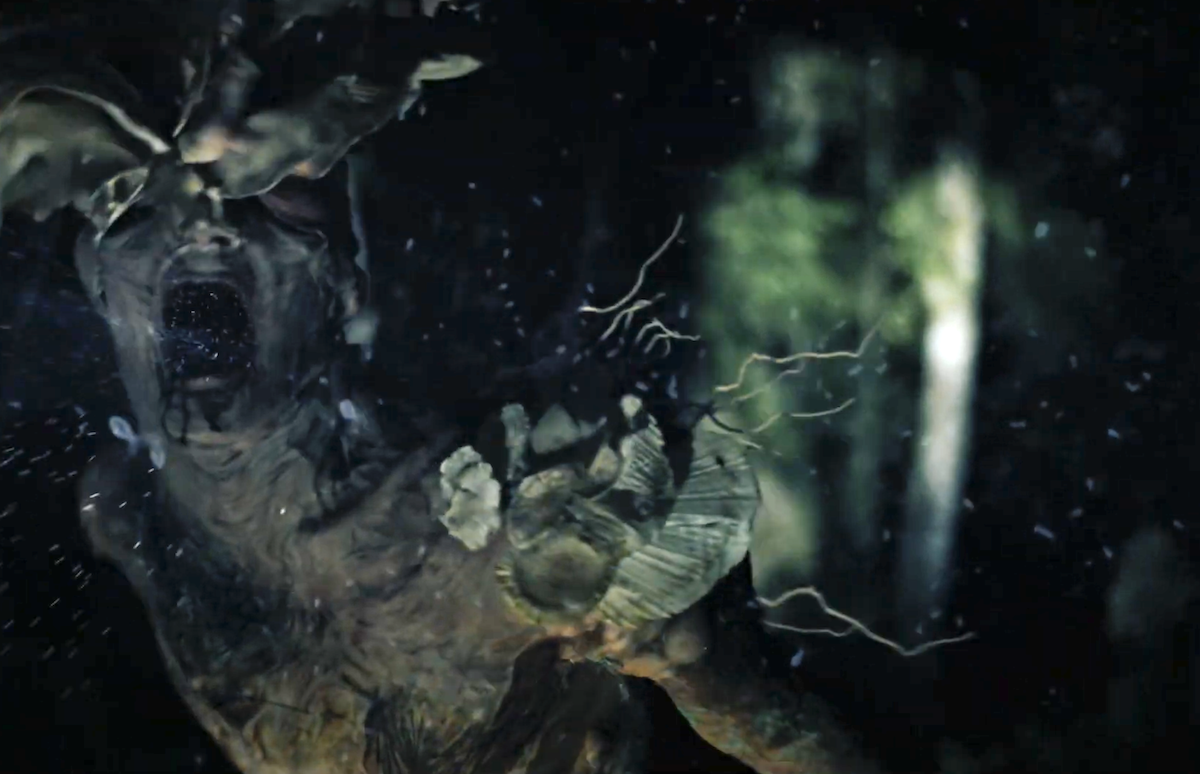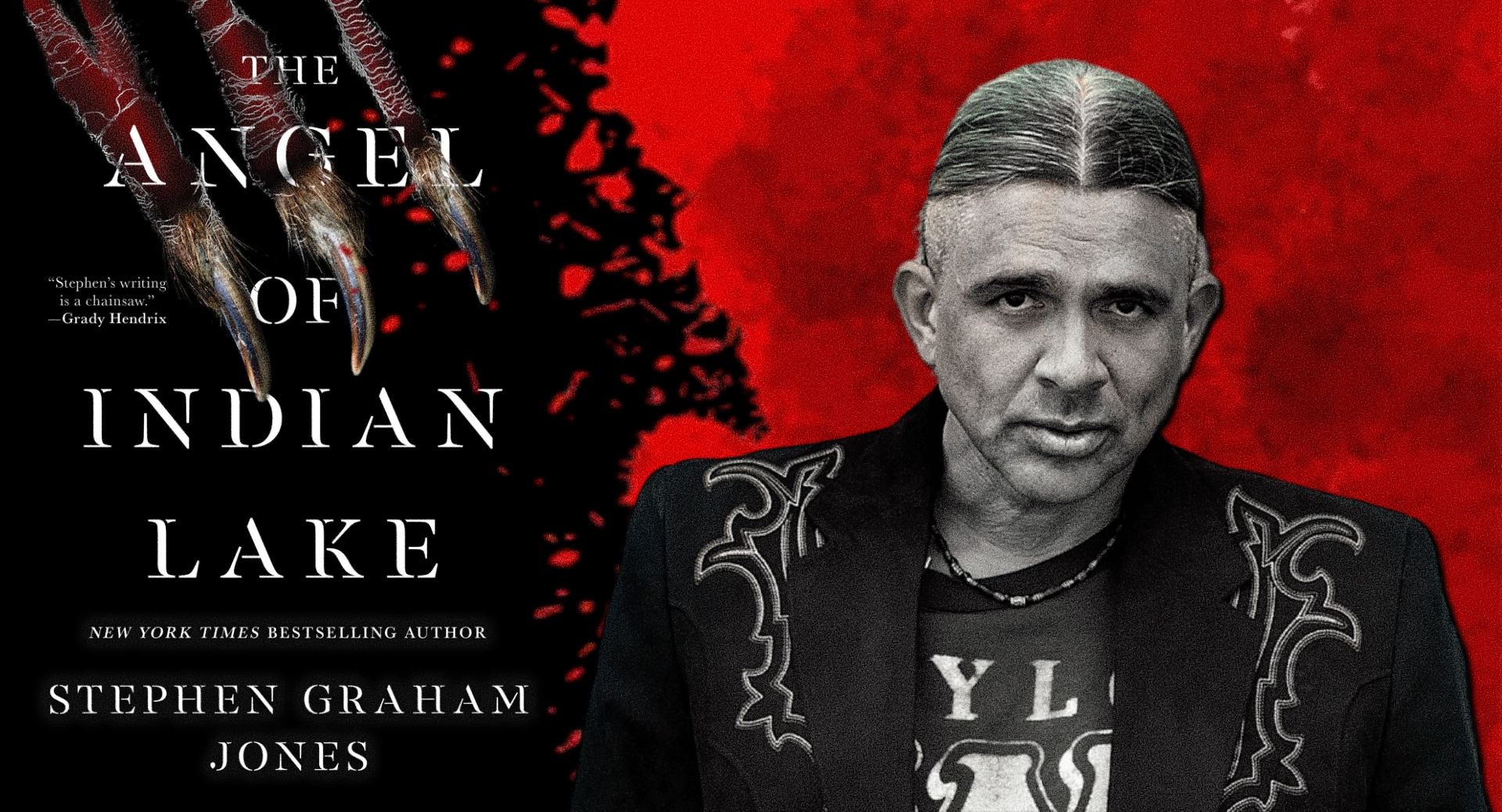Sponsored
Beware the New Flesh: ‘Gaia’ and the Return of Body Horror!

Few subgenres evoke revulsion and cringe-inducing terror quite like body horror. Becoming a stranger in your own body as it mutates or transforms in grotesque ways is inherently terrifying. But, as horror masters David Lynch and David Cronenberg have established repeatedly, body horror often serves as a metaphor for the human condition beyond flesh and skin. Lynch’s Eraserhead made the fears of becoming a parent a visceral experience, while Cronenberg’s The Brood served as a personal exploration of divorce, for example.
The resurgence of body horror brings with it fascinating new evolutions of the subgenre, particularly in the way that eco-horror has fully embraced the subgenre. The latest among them is Gaia, an eco-horror feature that sees an injured forest ranger saved by two off-the-grid survivalists while on a routine mission. The boy and his father follow their own religion deeply tied to nature, which triggers suspicion. But when their cabin is attacked by strange, post-human beings one night, she learns that there is a more significant threat in this emergent wilderness. Jaco Bouwer’s South African genre movie, written by Tertius Kapp, marries body horror to eco-horror, with nature causing alarming and gnarly changes for unlucky humans.
Monique Rockman, Carel Nel, Alex van Dyk, and Anthony Oseyemi star.
After last week’s limited theatrical run, Gaia will be released On Demand on June 25. In anticipation, we look at other horror films that mark the return of body horror at the hands of mother nature.
The Hallow

This dark fairytale is part creature feature, part body horror, and all Irish folktale. It follows a British plant conservationist and his family as they discover the hard way not to ignore warning signs and invade the territory of fairies, banshees, and changelings. It’s the latter that proves most troublesome for the family, as the changelings descend to steal away their baby. Dad gets stabbed in the eye by one, starting his transformation into a creature of the forest. Corin Hardy’s feature debut gives eco-horror a dark fairy tale twist.
The Girl with All the Gifts

Based on the novel by Mike Carey, The Girl with All the Gifts is set in a near-future where a parasitic fungus has ravaged the world. Those infected turn into mindless “hungries.” Only a small group of children seem immune; they still hunger for flesh but retain the ability to learn and think. Among them is Melanie (Sennia Nanua), the most intelligent and remarkable of all. When the military base holding the children captive falls, Melanie embarks on a quest with her teacher and the survivors, discovering her new place in the world. The body horror isn’t the focal point in this zombie feature, but it’s unavoidable. The fungal spread effectively plunged the world into a dystopian nightmare, and the protagonists eventually discover what the late-stage infection looks like- not unlike the affected in Gaia.
Unearth

Directed by John C. Lyons and Dorota Swies, this indie feature bides its time getting acquainted with two families nestled deep in America’s heartland as they struggle financially against the corporate greed that’s crowded out local businesses. When one of the families leases their land to an oil and gas company, the subsequent drilling unleashes something long-dormant from the deep below. This slow-burn horror builds to a body horror-heavy final act, with nature reclaiming the land with a gruesome vengeance.
Sea Fever

A West of Ireland trawler captain defies the coast guard’s orders to steer clear of an exclusion zone, unbeknownst to his crew and passengers. As a result, the boat runs into a strange object that leaves them stranded and their water supply contaminated by an unidentified parasite. It causes some of the crew to get infected, leading to some gag-worthy symptoms and severe eye trauma. For the most part, Sea Fever’s body horror is more understated as it focuses on the paranoia that spreads among the crew. Still, what it does have packs a punch.
Annihilation

Alex Garland’s adaptation of Jeff VanderMeer’s novel introduced endless nightmare imagery thanks to a strange bubble where the laws of nature don’t apply. A scientific expedition gets sent into an anomalous zone known as the “Shimmer,” a coastal area irrevocably altered by a meteoroid that crashed into a lighthouse. The team encounters mutated flora and fauna and eventually realizes that the Shimmer is altering their DNA. While the root cause of the dramatic ecological shift is extraterrestrial, how it drastically changes everything familiar about biology is potent. From the screaming bear to the haunting moments captured on camera from the previous expedition, Annihilation manages to offer both elegant beauty and pure nightmare fuel when it comes to body horror.
The Beach House

Two troubled college sweethearts set out for a romantic weekend at the family beach house. It turns into a fight for survival when unexpected guests and the surrounding environment show bizarre signs of a mysterious infection. The Beach House starts slowly on the body horror then dives into the deep end. While the third act goes hard on slimy transformations, look for one unforgettable moment involving a foot injury and a worm-like creature nestled within the open wound. Much like the films mentioned above, The Beach House drives home that mother nature got tired of the abuse and angrily took the earth back from humanity.
Now in limited theaters, look for Gaia on VOD platforms on June 25.

Podcasts
Stephen Graham Jones on Final Girls, Small Town Horror, and ‘The Angel of Indian Lake’ [Podcast Interview]

What does it mean to be a final girl? Can it really be as straightforward as staying alive until the sun rises? Picking up the knife, the machete, the abandoned gun and putting down the killer? Or is it something more? Could it mean stepping into a position of power and fighting for something larger than yourself? Or risking your life for the people you love? Could it be that anyone who bravely stands against an unstoppable force has final girl blood running through their veins?
Jennifer “Jade” Daniels has never seen herself as a final girl. When we first meet the teenage outcast in Stephen Graham Jones’ My Heart is a Chainsaw, she’s lurking on the fringes of her her small town and educating her teachers about the slasher lore. She knows everything there is to know about this bloody subgenre, but it takes a deadly twist of fate to allow the hardened girl to see herself at the heart of the story. In Don’t Fear the Reaper, the weathered fighter returns to the small town of Proofrock, Idaho hoping to heal. But a stranger emerges from the surrounding woods to test her once again. The final chapter of this thrilling trilogy, The Angel of Indian Lake, reunites us with the beloved heroine as she wages war against the Lake Witch for the soul of the town. She’ll need all the strength her many scars can provide and the support of the loved ones she’s lost along the way.
Today, Shelby Novak of Scare You to Sleep and Jenn Adams of The Losers’ Club: A Stephen King Podcast sit down to chat with the award-winning author about the concluding chapter in his bestselling Indian Lake trilogy. Together they discuss the origins of Jade’s beloved nickname, life in a small town, complicated villains, and all those horror references that made the first two novels fan favorites. Jenn reveals how many times she cried while reading (spoiler: a lot), Shelby geeks out over the novel’s emotional structure, and all three weigh in on their favorite final girls and which entry is the best in the Final Destination franchise.
Stream the heartfelt conversation below pick up your copy of The Angel of Indian Lake, on bookshelves now. Bloody Disgusting‘s Meagan Navarro gives the novel four-and-a-half skulls and writes, “Proofrock has seen a copious amount of bloodshed over three novels, but thanks to Jade, an unprecedented number of final girls have risen to fight back in various ways. The way that The Angel of Indian Lake closes that loop is masterful, solidifying Jade Daniels’ poignant, profound legacy in the slasher realm.”














You must be logged in to post a comment.